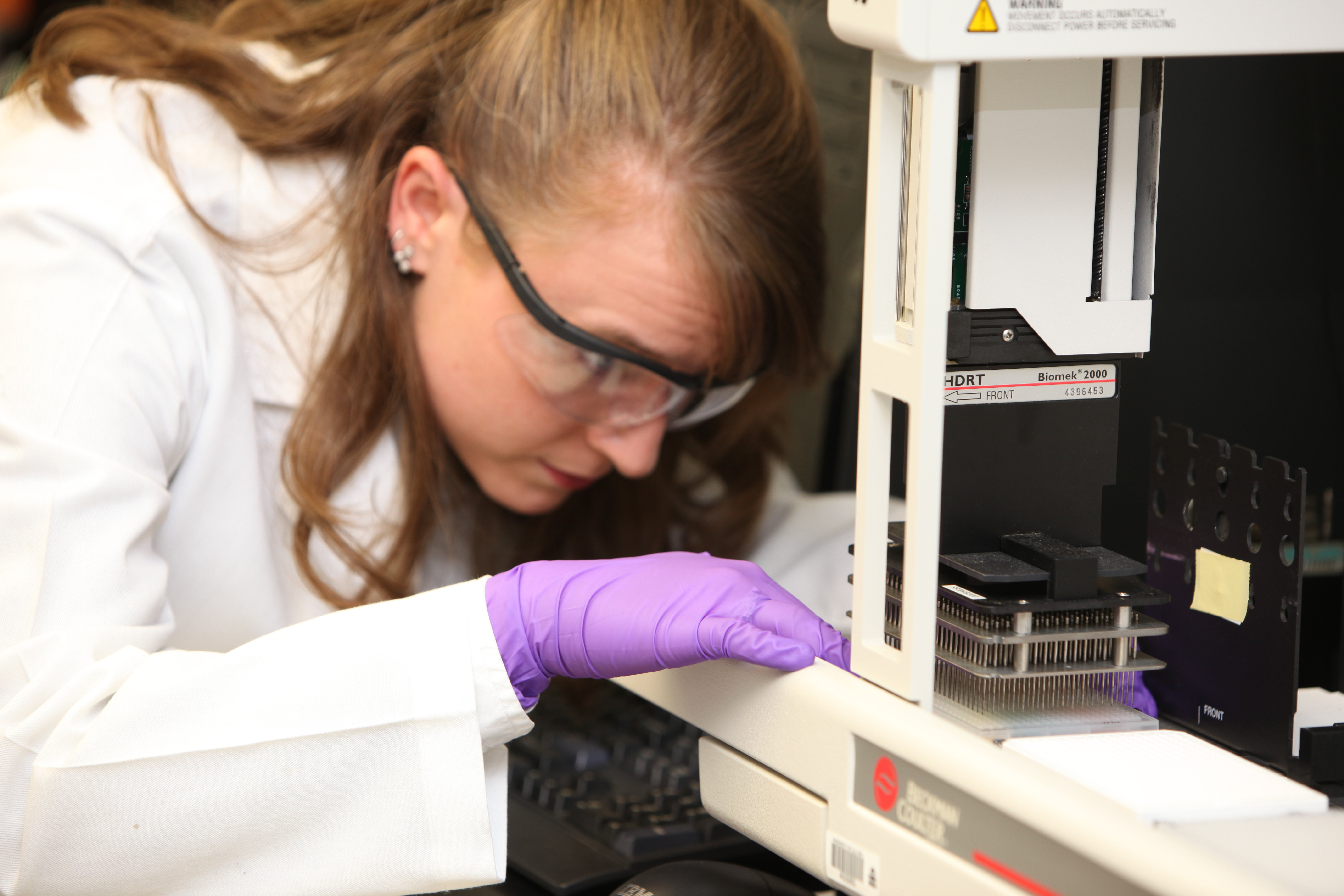New CompTox Approach Targets Thyroid
By Michaela Burns
We are exposed to chemicals everyday— either through chemicals in the environment, in our food or water, or by using consumer products such as shampoos, colognes, and perfumes. Chemicals help these products to do their jobs—whether cleaning your body or making you smell good.  Working with industry and other interest groups, EPA evaluates these chemicals and, if necessary, regulates their presence in the environment to help protect our health. Because traditional testing approaches are time-intensive, only a small fraction of chemicals have been evaluated fully for potential human health effects. New methods are needed to rapidly address chemical safety.
Working with industry and other interest groups, EPA evaluates these chemicals and, if necessary, regulates their presence in the environment to help protect our health. Because traditional testing approaches are time-intensive, only a small fraction of chemicals have been evaluated fully for potential human health effects. New methods are needed to rapidly address chemical safety.
To help address this problem, EPA has been developing new computational toxicology methods to prioritize chemicals for testing. One example of this effort is the Endocrine Disruptor Screening Program in the 21st century (EDSP21) which uses the latest computational toxicology methods to evaluate chemicals for potential endocrine disruption. Recent EPA research in this area is focused on evaluating chemicals for thyroid disruption.
Why is EPA interested in the thyroid? Well, the thyroid, an organ that is located at the front of your neck, is responsible for producing thyroid hormone, a process called thyroid synthesis. Exposure to certain chemicals can interfere with thyroid hormone synthesis, resulting in less thyroid hormone in blood and tissues. In adults, thyroid hormone helps regulate key functions, including metabolism rate and the amount of blood pumped into our heart per minute. When thyroid synthesis is disturbed in the adult body, it can cause reversible symptoms such as depression, fatigue, weight gain, and constipation. Thyroid hormones also help regulate brain development in utero, which means that pregnant mothers and children are populations of concern for thyroid hormone changes. A decrease in thyroid hormone availability during development of a fetus can result in irreversible changes to intelligence, cognitive ability, and motor skills. These potential health effects make it critical that we identify chemicals that may alter thyroid hormone levels.
One of the ways that thyroid hormone synthesis can be decreased is by inhibition of an enzyme called thyroperoxidase. EPA researchers have developed and are using a high-throughput screening assay to detect inhibitors of thyroperoxidase. This high-throughput screening assay can be used to screen thousands of chemicals at a fraction of the time and cost of traditional in vitro and/or whole animal studies.
In 2016 researchers published a scientific paper, Tiered High-Throughput Screening Approach to Identify Thyroperoxidase Inhibitors Within the ToxCast Phase I and II Chemical Libraries (Paul Friedman et al.). This paper describes the results and analysis from screening 1074 chemical samples for potential thyroperoxidase inhibition.
This the largest screening effort to date to identify chemicals that inhibit thyroperoxidase, and it’s only the beginning! This work is part of a larger EPA effort to develop a set of new high-throughput screening assays and other faster computational toxicology approaches to evaluate how chemicals might change thyroid hormone homeostasis. The ultimate goal is to screen chemicals as efficiently as possible in order to make a prediction about whether a chemical may affect thyroid hormones.
And all of EPA’s computational toxicology data, including the data from this paper on screening for thyroperoxidase inhibition, are publicly accessible. You can find and interact with the data through the EPA ToxCast Dashboard and all of the data can be downloaded from the ToxCast data download website.
About the Author: Michaela Burns is an Oak Ridge Associated Universities contractor and writer for the science communication team in EPA’s Office of Research and Development.









